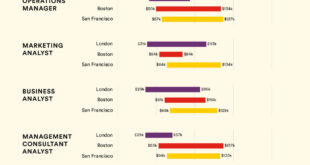A lot of uncalled behavior at work might result in unconscious bias. Bias at workplaces is still a problem that needs to be eliminated.
Unconscious bias often happens when we have unconscious feelings toward other people. Feelings that cloud our judgments from making the right decisions. Precisely, one of the most frequent biases we often come across is workplace bias.
According to Cambridge, bias is defined as the action of supporting or opposing a particular person or their decisions in an unfair manner, due to personal opinions, thus clouding their judgment. Decision making can be a challenge at the workplace and often influenced by factors such as age, weight, gender, dress, height, or ever color.
Therefore, drawing the line for candidates seeking to get hired. Also, if biases at work go unnoticed, this could cause a significant impact to the organization, thus diluting the talent pool and setting a limit toward diversity, inclusivity, and creativity.
In the given infographic, we will describe different biases that often take place under multiple settings and how to decode them.
Biases tend to rise in settings such as – promotion discussions, employee references, research designs, and interview interactions.
Some of the workplace bias you might not be aware:
Age
- About 18,000 complaints were filed against age discrimination in 2017 alone.
- A mere 20 percent of workers over 55+ are employed in the US.
- When people tend to enter the age of 50, about 59 percent starts noticing the age bias.
Weight
- Workers with a BMI of 35+ experienced weight bias, about 40 percent.
- Men and women who were declared obese were said to earn USD 2,512 per year, this is slightly lesser on the average as compared to those with normal weight.
- About 93 percent of employers prefer to choose a normal weight worker over an overweight candidate.
Height
- Santa Cruz, San Francisco, and the state of Michigan were the only state in the US that actually has legislation against height discrimination.
- Employees who are above 6ft tend to earn more than USD 166,000 within their 30 years of career history.
- About 90 percent of the CEOs are said to be above 6ft.
Hair
- About 60.6 percent of the red-haired males reported experiencing some sort of discrimination in the UK.
- Women CEOs of S&P 500 companies were said to have blonde hair, the statistics had it to 48 percent. It was said that highlighted hair was preferred for a leadership role.
- Common hairstyles such as Bantu knots, braids, and locs were ranked lowest in the job-readiness category.
Dress
- About 81 percent of the women feel having dress codes at workplaces is a discriminatory act to their sex.
- Also, 78 percent of the workers asked for a clear distinction between work clothes and non-work clothes.
- Workers having above-average beauty were said to earn 10 to 15 percent higher salaries.
Here’s what HR professionals are doing to combat bias at the workplace:
- Utilize technology to address bias.
- Foster diversity and inclusivity for employees.
- Measure and experiment, use techniques like a psychometric evaluation for better decision making.
- Widen network during recruitment.
- You need to challenge the decision-makers.
As an HR leader, what are the steps you’ve taken to tackle unconscious bias?

Infographic Source: https://www.topchro.com/article/6-tips-for-hr-professionals-to-tackle-workplace-biases
 Infographic Portal New Infographics Resource Portal
Infographic Portal New Infographics Resource Portal
